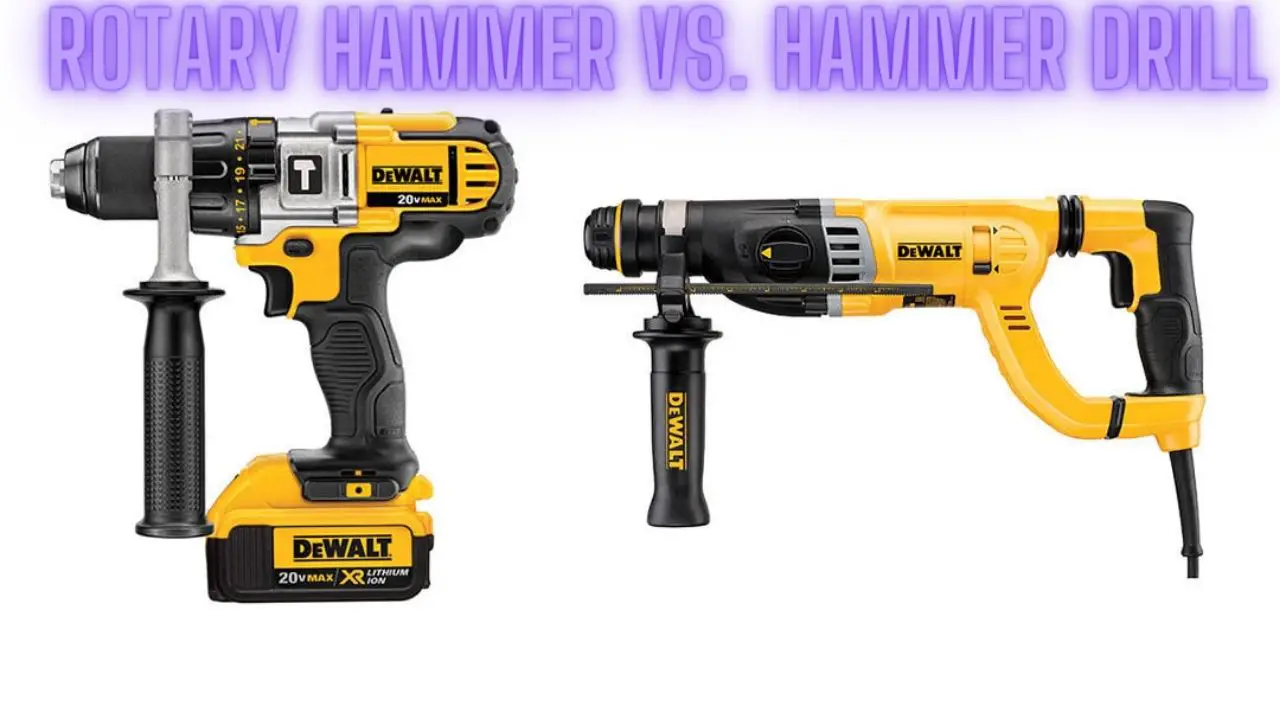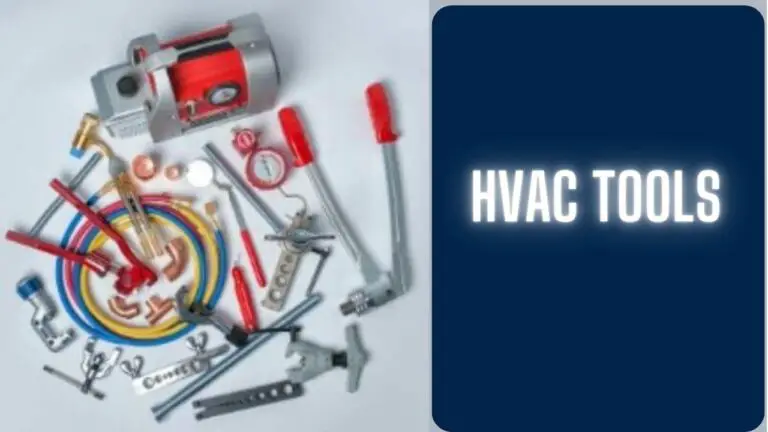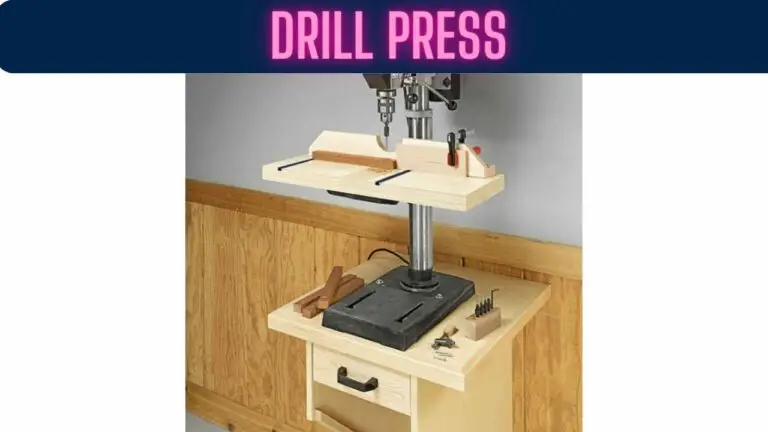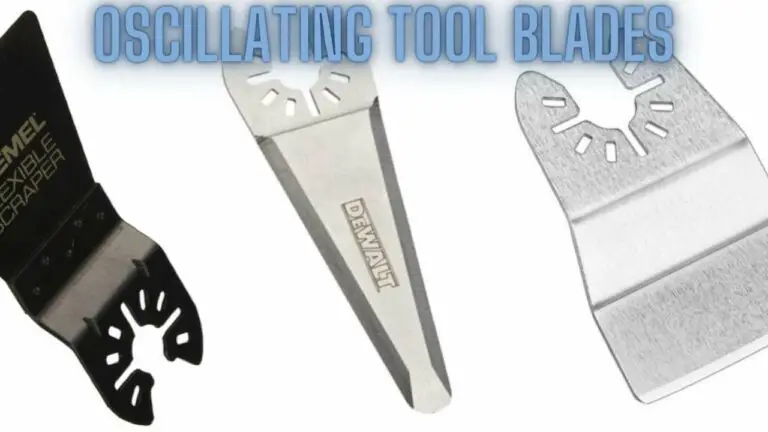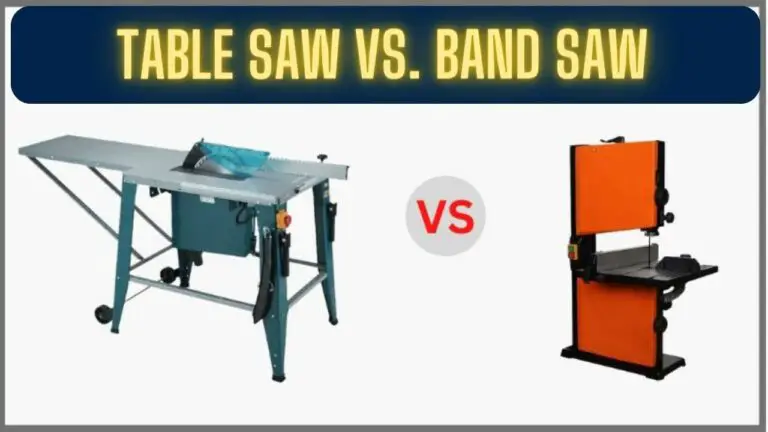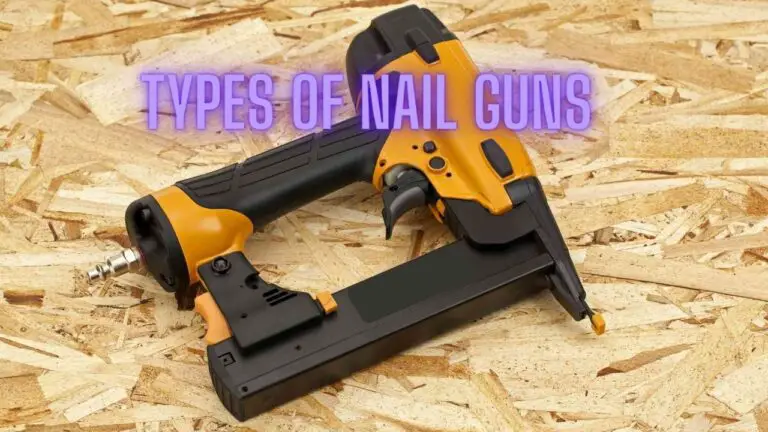Rotary Hammer vs. Hammer Drill: Choosing the Right Tool for the Job
Introduction
In construction, renovation, and various do-it-yourself (DIY) projects, having the right drilling tool can make a significant difference in efficiency, accuracy, and overall project success. Two commonly used drilling tools are the rotary hammer and the hammer drill. While both are designed to bore holes into tough materials like concrete, masonry, and stone, they have distinct differences in terms of design, mechanism, and application.
This guide aims to provide a comprehensive comparison between rotary hammers and hammer drills, shedding light on their respective features, capabilities, advantages, and limitations. By understanding the differences between these two tools, users can make informed decisions when selecting the most suitable drilling tool for their specific projects and requirements.
Throughout this guide, we’ll delve into the inner workings of rotary hammers and hammer drills, explore their applications, discuss performance metrics, and offer insights into factors influencing the choice between the two. Whether you’re a professional contractor, a DIY enthusiast, or someone in between, understanding the nuances of rotary hammers and hammer drills can empower you to tackle drilling tasks with confidence and precision. Let’s dive in and explore the world of drilling tools.
Rotary Hammer
A rotary hammer is a powerful and versatile drilling tool specifically designed for heavy-duty drilling tasks, particularly in tough materials like concrete, masonry, and stone. It employs a combination of rotary motion and percussive force to bore holes quickly and efficiently. Here are key aspects of rotary hammers:
- Definition and Characteristics:
- A rotary hammer is a specialized drilling tool that features a pneumatic hammering mechanism combined with a rotating drill bit.
- It is distinguished by its ability to deliver both rotary motion and hammering action simultaneously, allowing for rapid drilling in hard materials.
- Rotary hammers typically have a pistol-grip design for comfortable handling and control during operation.
- Mechanism of Action:
- Rotary hammers use a piston mechanism driven by a powerful motor to generate percussive blows while the drill bit rotates.
- The piston strikes the back of the drill bit, transferring impact energy to the material being drilled.
- This dual-action mechanism enables rotary hammers to drill holes faster and with less effort compared to conventional drills.
- Types of Rotary Hammers:
- Rotary hammers are available in various sizes and configurations, with the most common types being SDS-Plus, SDS-Max, and Spline Drive.
- SDS-Plus rotary hammers are suitable for light to medium-duty drilling tasks, while SDS-Max and Spline Drive models are designed for heavy-duty applications.
- Applications and Common Uses:
- Rotary hammers are ideal for drilling large diameter holes in concrete, masonry, and other hard materials.
- They are commonly used in construction, renovation, demolition, and remodeling projects.
- Other applications include installing anchors, fasteners, and dowels, as well as chiseling and breaking concrete surfaces.
- Advantages and Disadvantages:
- Advantages:
- High drilling speed and efficiency.
- Superior power and impact force.
- Versatility for a wide range of drilling tasks.
- Disadvantages:
- Higher cost compared to hammer drills.
- Heavier and bulkier design may be less maneuverable in tight spaces.
- Requires a stable power source (corded models) or frequent battery charging (cordless models).
- Advantages:
Overall, rotary hammers are indispensable tools for professionals and serious DIY enthusiasts tackling demanding drilling tasks in concrete and masonry. Their combination of power, speed, and precision makes them essential for projects where efficiency and performance are paramount.
Hammer Drill
A hammer drill is a versatile and commonly used drilling tool that combines rotary motion with percussive force to bore holes in tough materials such as concrete, masonry, and stone. While not as powerful as rotary hammers, hammer drills offer greater versatility and are suitable for a wide range of drilling applications. Here are key aspects of hammer drills:
- Definition and Characteristics:
- A hammer drill is a handheld power tool designed for drilling holes in hard materials.
- It features a hammering mechanism that delivers rapid, short thrusts to the drill bit while simultaneously rotating it.
- Hammer drills typically have a pistol-grip design with a trigger for controlling the speed and operation of the tool.
- Mechanism of Action:
- Hammer drills use an internal mechanism that generates percussive blows as the drill bit rotates.
- The percussive action helps to break up tough materials and facilitate faster drilling compared to standard rotary drills.
- While not as powerful as rotary hammers, hammer drills are capable of drilling holes in concrete, masonry, brick, and other hard surfaces.
- Types of Hammer Drills:
- Hammer drills are available in both corded and cordless models.
- Corded hammer drills require a continuous power source and are suitable for extended use and heavy-duty applications.
- Cordless hammer drills are powered by rechargeable batteries, offering greater portability and convenience for on-the-go drilling tasks.
- Applications and Common Uses:
- Hammer drills are versatile tools suitable for a wide range of drilling tasks in concrete, masonry, wood, metal, and other materials.
- They are commonly used in construction, renovation, installation, and DIY projects.
- Typical applications include drilling holes for anchors, fasteners, electrical wiring, plumbing, and general-purpose drilling.
- Advantages and Disadvantages:
- Advantages:
- Versatile for drilling various materials.
- More affordable than rotary hammers.
- Available in both corded and cordless options for flexibility.
- Disadvantages:
- Lower power and impact force compared to rotary hammers.
- Limited drilling capacity in extremely hard materials.
- May require more effort and time for drilling larger diameter holes in concrete and masonry.
- Advantages:
Overall, hammer drills are essential tools for professionals and DIY enthusiasts seeking a versatile drilling solution for a wide range of applications. While not as powerful as rotary hammers, hammer drills offer sufficient performance and flexibility for many drilling tasks in construction and home improvement projects.
Rotary Hammer vs. Hammer Drill: Understanding the Differences
Rotary hammers and hammer drills are both versatile power tools used for drilling into hard materials like concrete, masonry, and stone. However, they differ significantly in terms of their design, capabilities, and intended applications. Here are the key differences between rotary hammers and hammer drills:
1. Drilling Mechanism:
- Hammer Drill:
- A hammer drill uses a mechanical hammering action generated by two cam plates that move back and forth to create a rapid tapping motion. This hammering action aids in breaking through hard materials.
- Rotary Hammer:
- A rotary hammer employs a pneumatic piston mechanism that delivers a powerful and continuous hammering action. This mechanism is designed for heavy-duty drilling into extremely hard materials.
2. Purpose and Applications:
- Hammer Drill:
- Hammer drills are versatile and are primarily designed for drilling holes in materials like wood, metal, plastic, and light-duty masonry. They can be used for general DIY projects and occasional masonry work.
- Rotary Hammer:
- Rotary hammers are specialized tools built for heavy-duty construction and renovation tasks. They excel in drilling large holes in concrete, masonry, and stone. They are commonly used in professional construction settings.
3. Size and Weight:
- Hammer Drill:
- Hammer drills are typically compact and lightweight, making them easy to handle for extended periods. They are suitable for both overhead and horizontal drilling.
- Rotary Hammer:
- Rotary hammers are larger and heavier than hammer drills due to their robust construction and the power required for heavy-duty tasks. They are designed for more demanding drilling applications.
4. Power and Impact:
- Hammer Drill:
- Hammer drills deliver moderate impact force, suitable for light to medium drilling into masonry. They are not as powerful as rotary hammers.
- Rotary Hammer:
- Rotary hammers provide a significantly higher impact force and are capable of handling demanding tasks, such as drilling into solid concrete or brick walls.
5. Versatility:
- Hammer Drill:
- Hammer drills often feature a “drill-only” mode, allowing them to function as standard drills for non-masonry tasks. This versatility makes them suitable for a wide range of projects.
- Rotary Hammer:
- While some rotary hammers have a “drill-only” mode, they are primarily designed for drilling into hard materials and are less versatile for non-masonry tasks.
6. Common Uses:
- Hammer Drill:
- Common uses include DIY projects, woodworking, metalworking, and occasional masonry tasks like drilling holes for anchors and screws.
- Rotary Hammer:
- Rotary hammers are commonly used in professional construction projects, concrete drilling, foundation work, and heavy-duty masonry tasks.
7. Cost:
- Hammer Drill:
- Hammer drills are generally more affordable than rotary hammers, making them accessible to DIYers and homeowners.
- Rotary Hammer:
- Rotary hammers are typically more expensive due to their specialized construction and capabilities. They are often preferred by professionals for their power and reliability.
Choosing Between Rotary Hammer and Hammer Drill
Choosing between a rotary hammer and a hammer drill depends on various factors, including the specific requirements of your project, the materials you’ll be drilling into, your budget, and personal preferences. Here’s a guide to help you make the right choice:
- Project Requirements:
- Heavy-Duty Drilling: If you’re drilling large diameter holes (typically over 1/2 inch or 13 mm) in tough materials like concrete, masonry, or stone, a rotary hammer is the better choice due to its higher power and impact force.
- Light to Medium-Duty Drilling: For smaller diameter holes and less demanding drilling tasks in wood, metal, or softer materials, a hammer drill may suffice.
- Material Type:
- Concrete and Masonry: If your project primarily involves drilling into concrete, masonry, or other hard materials, a rotary hammer is recommended for its superior power and efficiency.
- Wood, Metal, and Other Materials: For drilling tasks in wood, metal, or softer materials where impact force is less critical, a hammer drill may be sufficient.
- Budget Considerations:
- Cost: Rotary hammers tend to be more expensive than hammer drills due to their higher power and specialized design. If budget is a concern and your drilling needs are relatively modest, a hammer drill may offer better value for money.
- Long-Term Investment: Consider the long-term benefits of investing in a rotary hammer if you anticipate tackling more demanding drilling tasks in the future. While the initial cost may be higher, a rotary hammer offers superior performance and durability for heavy-duty applications.
- Portability and Convenience:
- Corded vs. Cordless: If you require portability and flexibility for on-the-go drilling tasks or projects in locations without access to power outlets, a cordless hammer drill may be the preferred option. However, keep in mind that cordless models may have limitations in terms of power and runtime compared to corded rotary hammers.
- Size and Weight: Consider the size and weight of the tool, especially if you’ll be working in tight spaces or overhead. Hammer drills are generally lighter and more compact than rotary hammers, making them easier to maneuver in confined areas.
- User Experience and Comfort:
- Ergonomics: Test the ergonomics and handling comfort of both rotary hammers and hammer drills to ensure a comfortable grip and minimal fatigue during extended use.
- Control and Precision: Evaluate the control and precision offered by each tool, especially for tasks that require accurate drilling depth and placement.
- Future Growth and Flexibility:
- Project Scope: Consider the potential growth and complexity of your projects in the future. Investing in a rotary hammer may provide greater versatility and capability to handle a wider range of drilling tasks as your skills and projects evolve.
- Accessories and Compatibility: Check the availability of accessories and compatibility with various drill bits and attachments for both rotary hammers and hammer drills to ensure compatibility with your future needs.
In summary, the choice between a rotary hammer and a hammer drill depends on the specific requirements of your project, the materials you’ll be drilling into, your budget, and personal preferences. Assess these factors carefully to select the drilling tool that best meets your needs for efficiency, performance, and versatility.
Rotary Hammer vs. Hammer Drill FAQS
Here are some frequently asked questions (FAQs) about rotary hammers and hammer drills to help you better understand these power tools and their applications:
Rotary Hammer FAQs:
What is a rotary hammer, and how does it work?
A rotary hammer is a power tool designed for heavy-duty drilling into hard materials like concrete and masonry. It works by using a pneumatic piston mechanism to deliver a powerful and continuous hammering action as the drill bit rotates.
What are the primary applications of a rotary hammer?
Rotary hammers are primarily used for drilling large holes in concrete, masonry, and stone. They are commonly used in professional construction and renovation projects.
Can I use a rotary hammer for tasks other than drilling into hard materials?
Some rotary hammers have a “drill-only” mode, allowing them to function as standard drills for tasks like drilling holes in wood or metal. However, they are primarily designed for masonry work.
Are all rotary hammers the same size and weight?
No, rotary hammers come in various sizes and weights, ranging from compact models suitable for overhead drilling to larger, heavy-duty models for more demanding tasks.
Hammer Drill FAQs:
What is a hammer drill, and how does it work?
A hammer drill is a versatile power tool that combines standard drilling with a hammering action. It uses two cam plates that move back and forth to create a tapping motion, aiding in drilling into hard materials.
What are the primary applications of a hammer drill?
Hammer drills are used for drilling holes in a wide range of materials, including wood, metal, plastic, and light-duty masonry. They are suitable for DIY projects and general drilling needs.
Can I use a hammer drill for drilling into concrete and masonry?
Hammer drills can handle light to medium masonry work, such as drilling holes for anchors and screws. However, for heavy-duty masonry tasks, a rotary hammer is more appropriate.
Can I switch off the hammering action in a hammer drill to use it as a standard drill?
Yes, most hammer drills have a switch that allows you to turn off the hammering action, allowing them to function as standard drills for non-masonry tasks.
Choosing the Right Tool FAQs:
How do I decide between a rotary hammer and a hammer drill for my project?
Consider the type of materials you’ll be drilling into and the scale of your project. Choose a rotary hammer for heavy-duty masonry and concrete work, while a hammer drill is suitable for general DIY and woodworking tasks.
Are rotary hammers and hammer drills suitable for home use, or are they more for professionals?
Both tools can be used by homeowners and professionals. Hammer drills are more versatile and suitable for various tasks around the house, while rotary hammers excel in demanding professional construction work.
What factors should I consider when purchasing a rotary hammer or hammer drill?
Consider factors such as the tool’s power, size, weight, versatility, and your specific project needs. Also, factor in your budget and the frequency of use when making a selection.
Are there safety precautions I should take when using these tools?
Always wear appropriate safety gear, including safety glasses and hearing protection, when operating these tools. Follow the manufacturer’s safety guidelines and ensure proper tool maintenance.
Conclusion
In conclusion, the choice between a rotary hammer and a hammer drill depends on the nature of your projects and your budget. Both tools have their strengths, and selecting the right one will ensure efficient and effective drilling in your specific applications.

